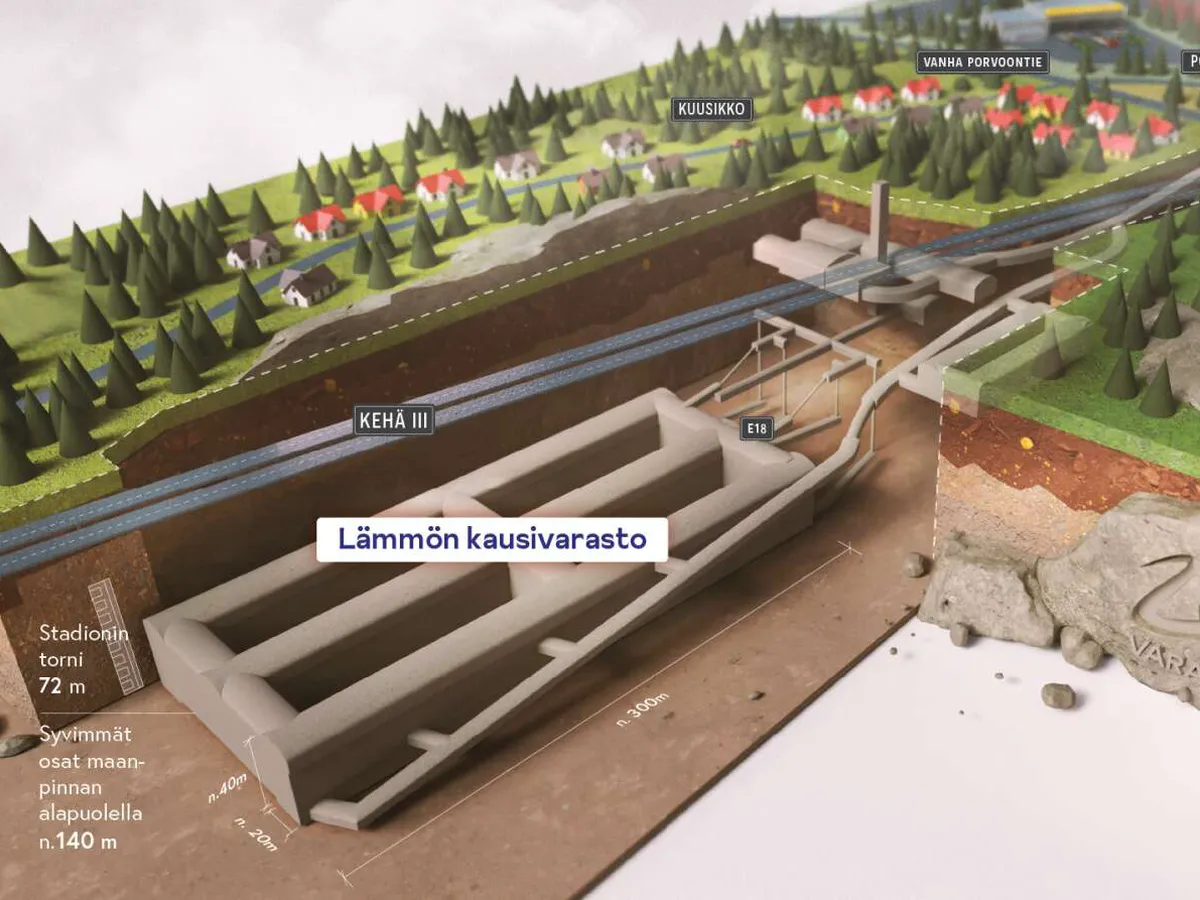A winning combination of affordable electricity and heat storage can create demand for electricity during cheap periods, increasing the overall price of electricity. This can make investments in wind power more profitable. In a recent announcement, Vantaa Energia revealed plans to build the world’s largest seasonal heat storage facility in Vantaa, demonstrating a commitment to promoting green energy transitions.
The investment will involve constructing a massive water tank in the bedrock of Kuusikkomäki in Vantaa, along with two electric boilers. Once completed in 2028, the facility will be capable of storing 90 gigawatt hours of thermal energy, enough to heat a medium-sized Finnish city for up to a year. This initiative follows in the footsteps of other heat storage projects like the one completed by Helen in the old oil caves of Mustikkamaa.
With advancements in technology, it is now possible to electrify and store heat production using affordable electric boilers. Cheap electricity can be used to heat water on an industrial scale and store it efficiently, marking a significant shift away from traditional methods of heat production. The combination of cheap electricity and heat storage not only benefits wind power investments but also reduces fuel burning and carbon dioxide emissions.
Finland is facing challenges due to the variability in electricity production, especially with the increase in wind capacity. However, with over seven billion euros in pending investments for transitioning away from fossil fuels and adopting sustainable energy solutions, Finland is making progress towards achieving its climate goals, including carbon neutrality by 2035. Various innovative solutions, such as electrification and storage of heat production, are crucial for this transition.
The Finnish energy system is undergoing significant changes due to advancements in technology that enable the electrification and storage of heat production using affordable electric boilers. Cheap electricity can now be used to heat water on an industrial scale and store it efficiently, marking a significant shift away from traditional methods of heat production.
In conclusion, Vantaa Energia’s plans for building the world’s largest seasonal heat storage facility demonstrate a commitment to promoting green energy transitions. With over seven billion euros pending investments for transitioning away from fossil fuels and adopting sustainable energy solutions, Finland is making progress towards achieving its climate goals.
The investment involves constructing a massive water tank in Kuusikkomäki along with two electric boilers.
The combination of cheap electricity and affordable heat storage not only benefits wind power investments but also reduces fuel burning and carbon dioxide emissions.
Finland’s energy system faces challenges due to variability in electricity production but advancements have made it possible to use affordable electric boilers for electrification and efficient storage of thermal energy.


